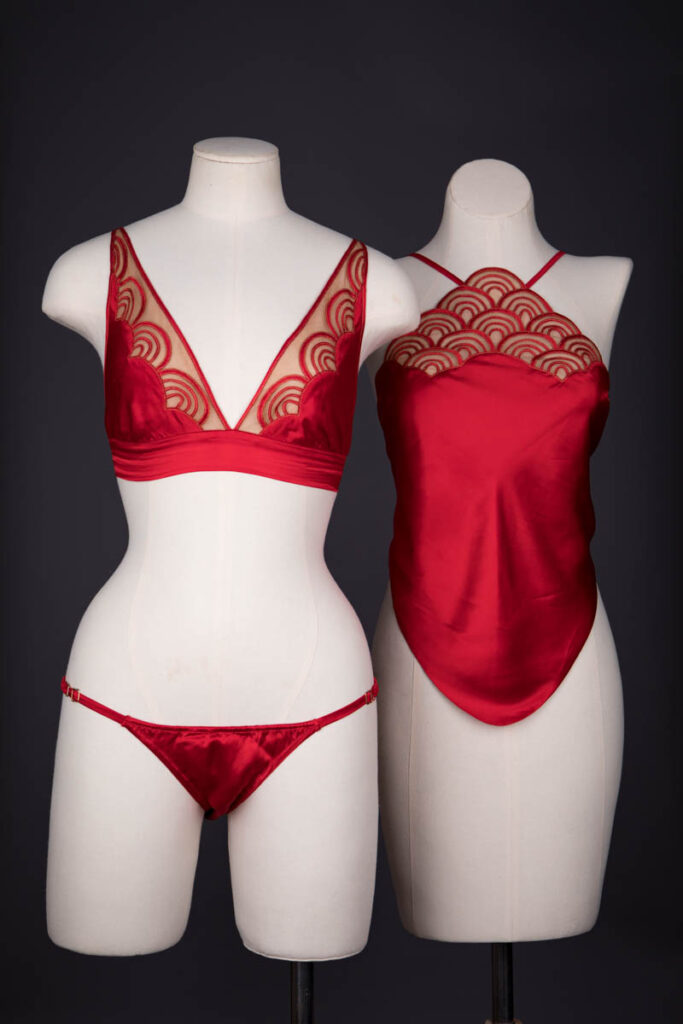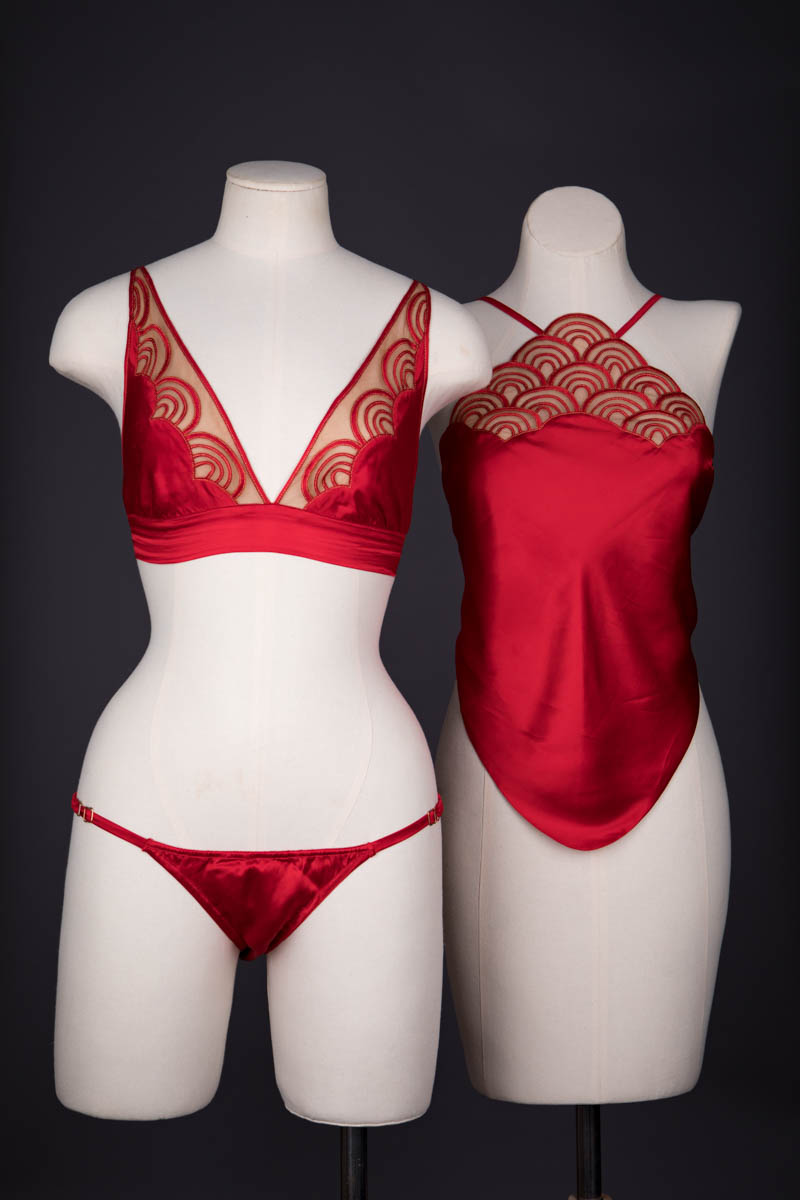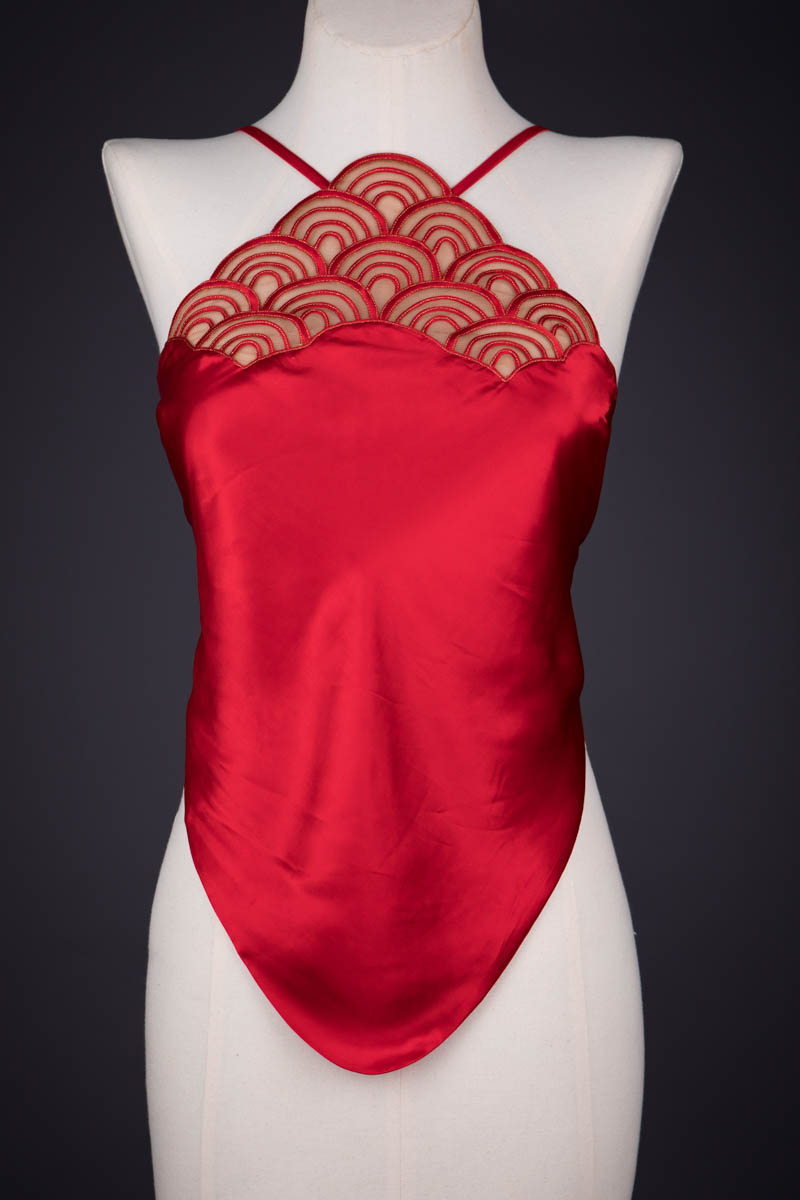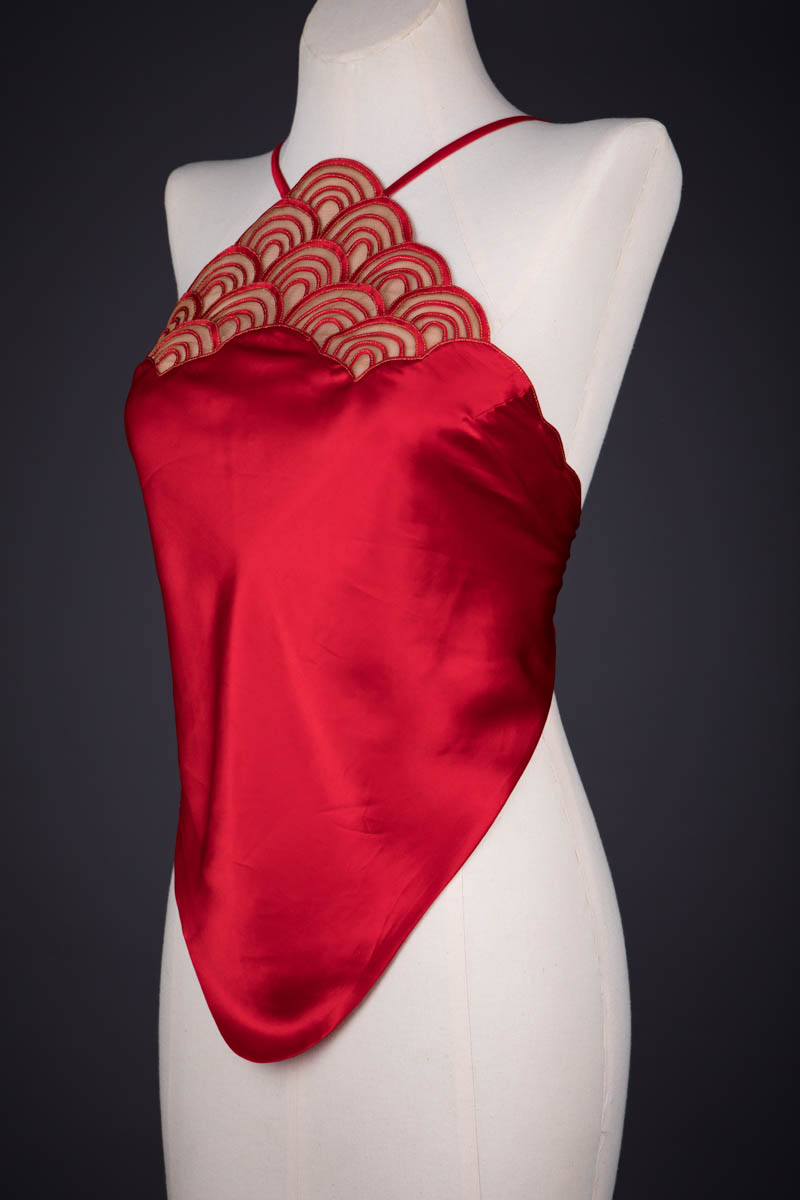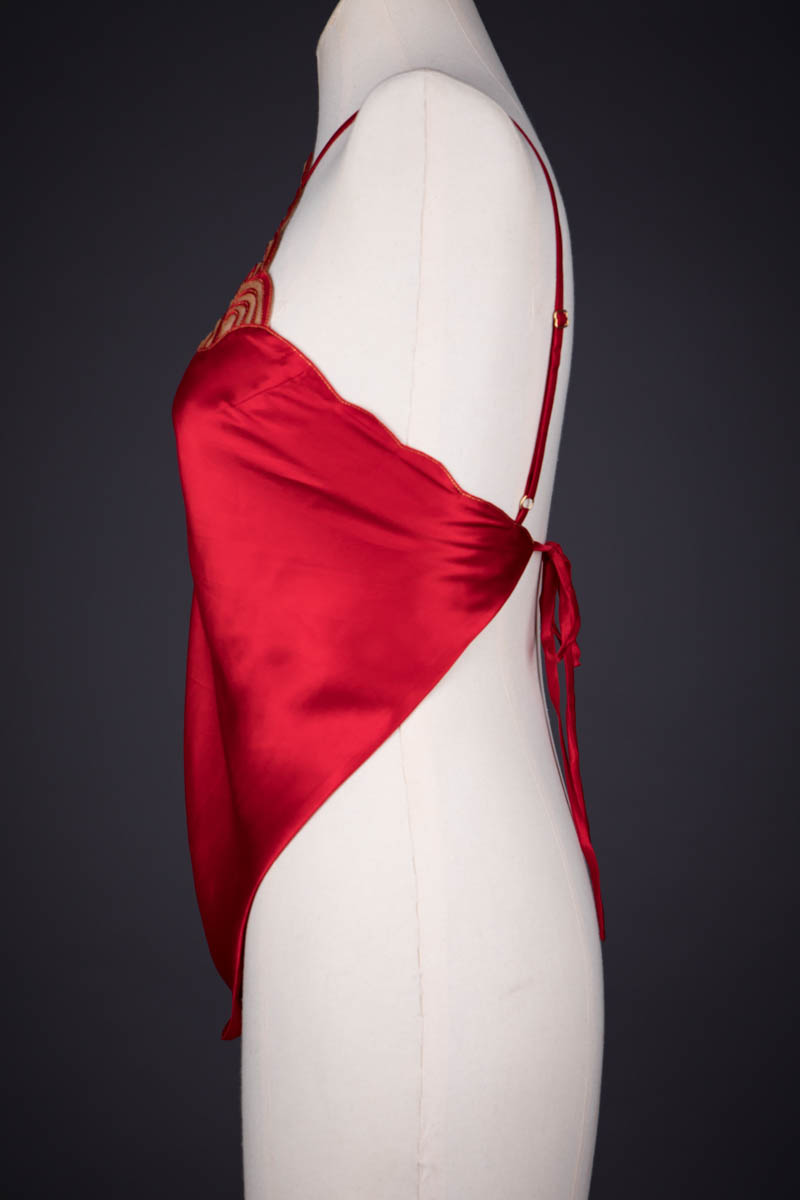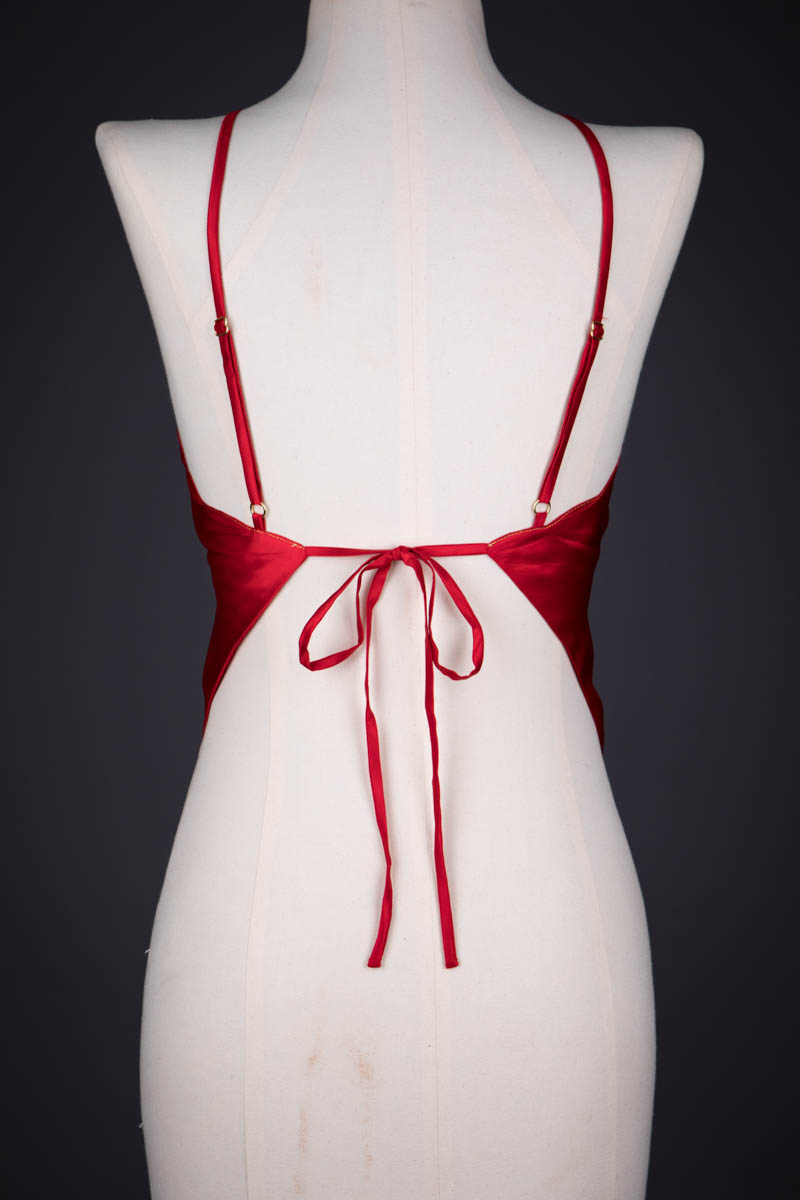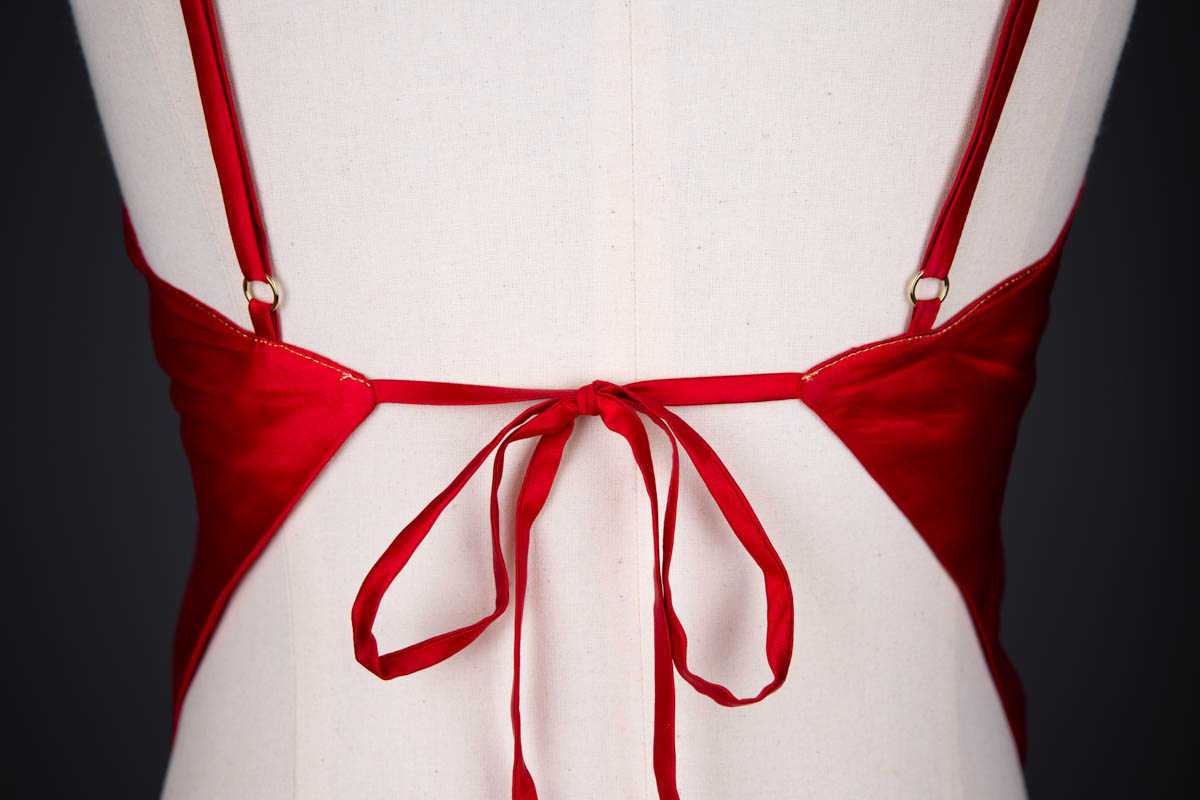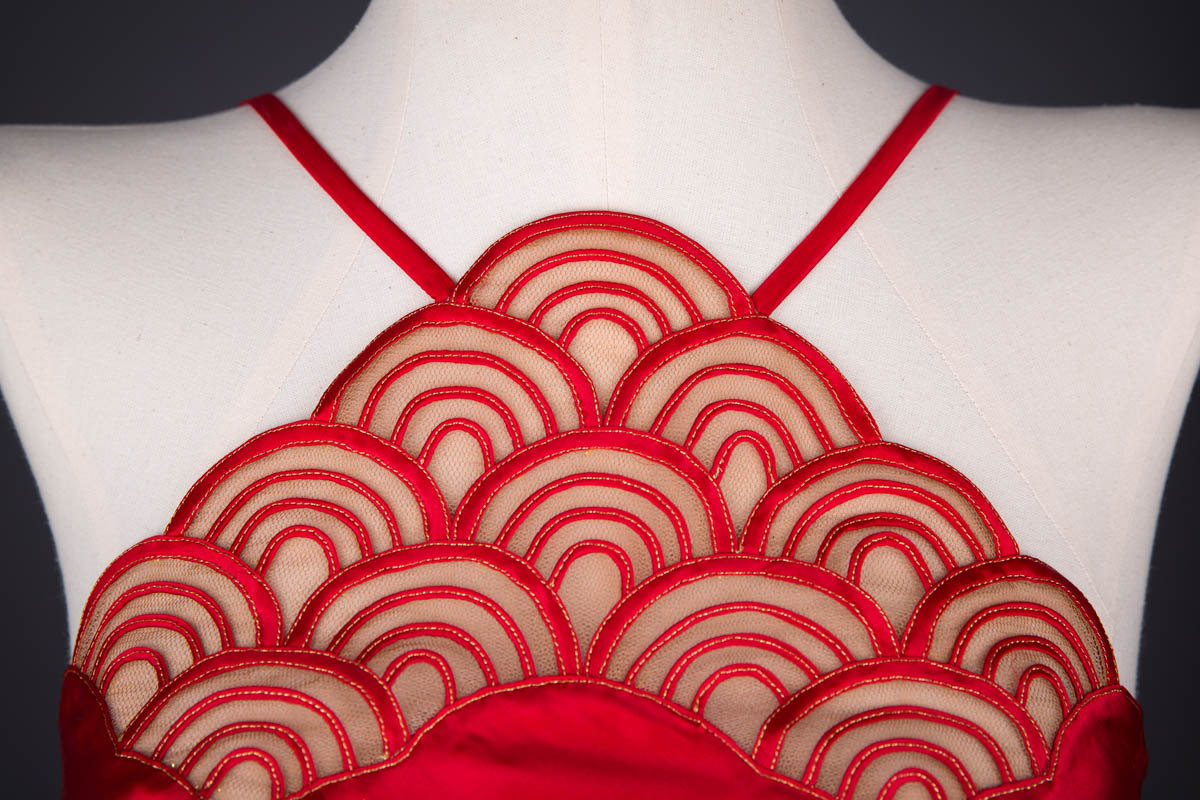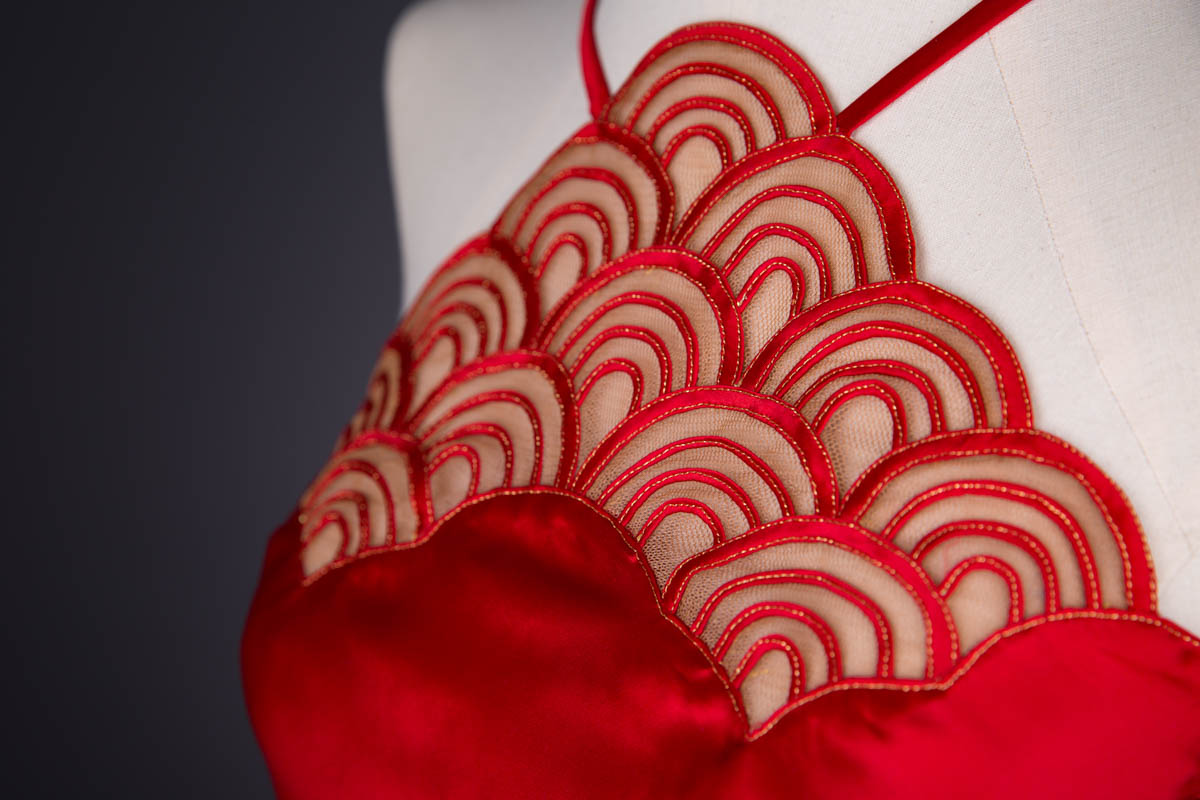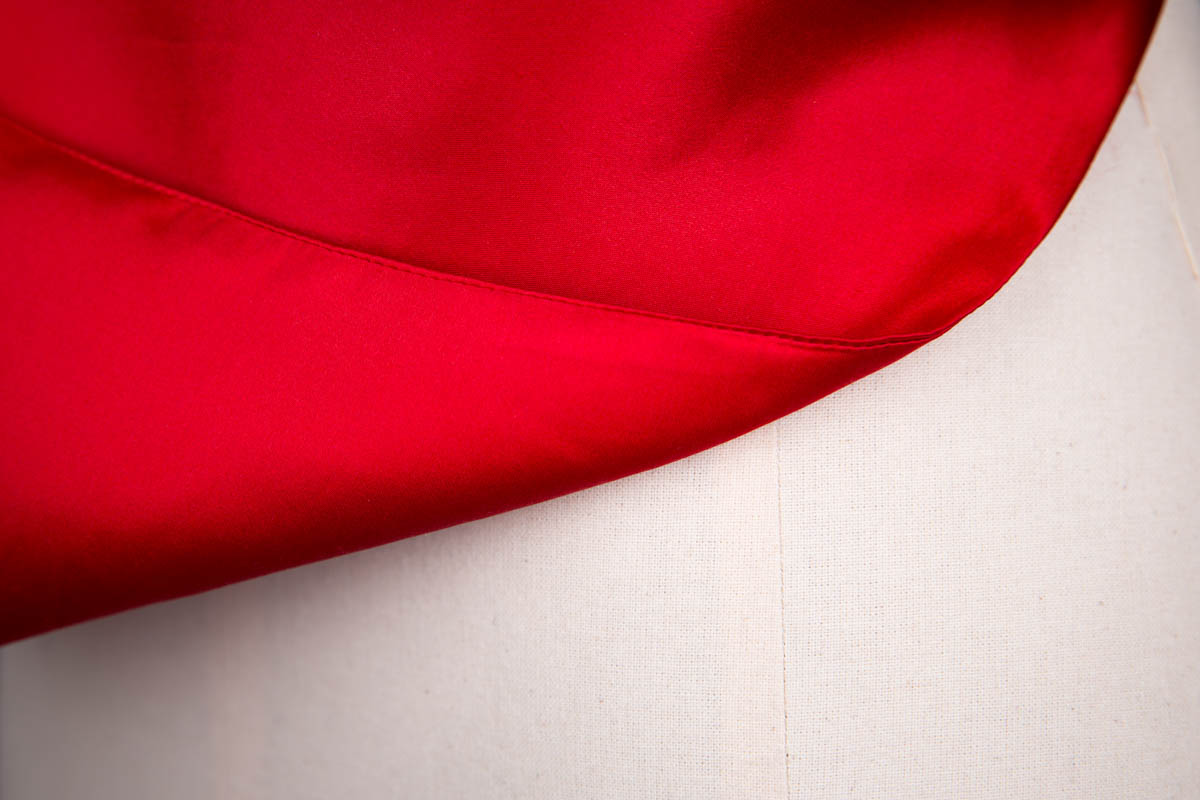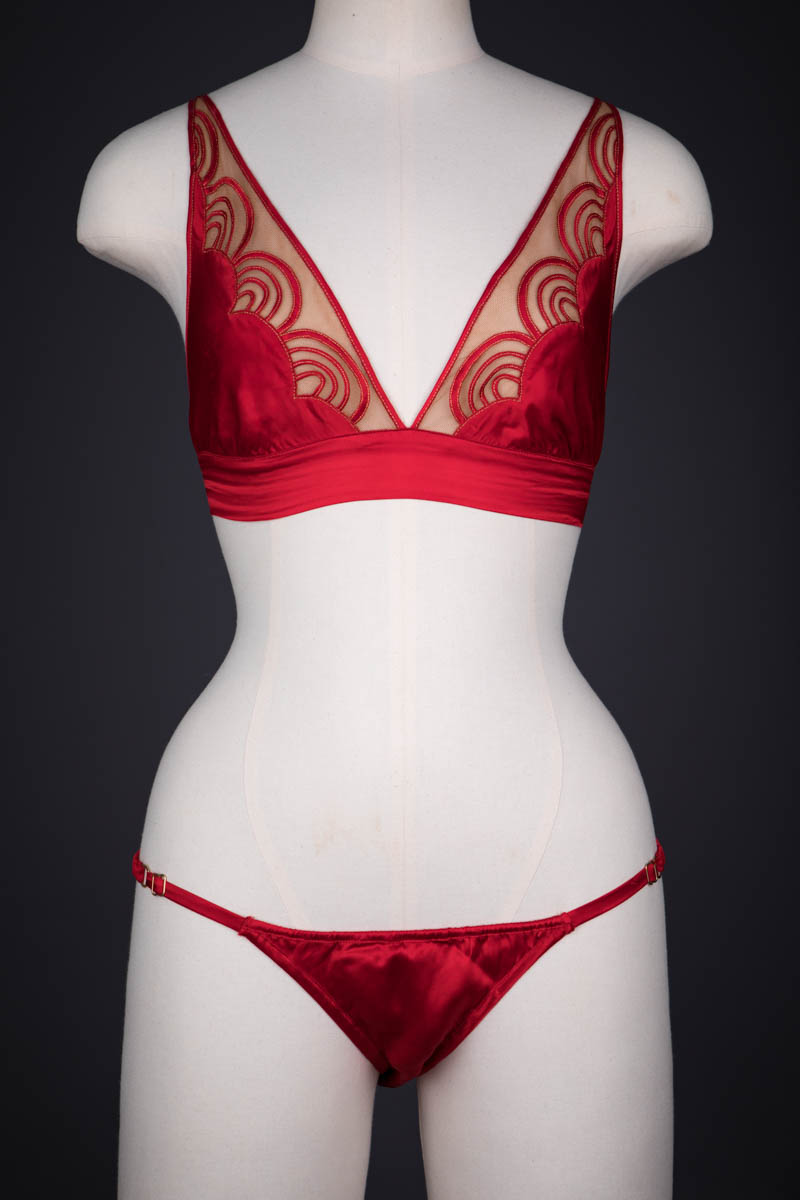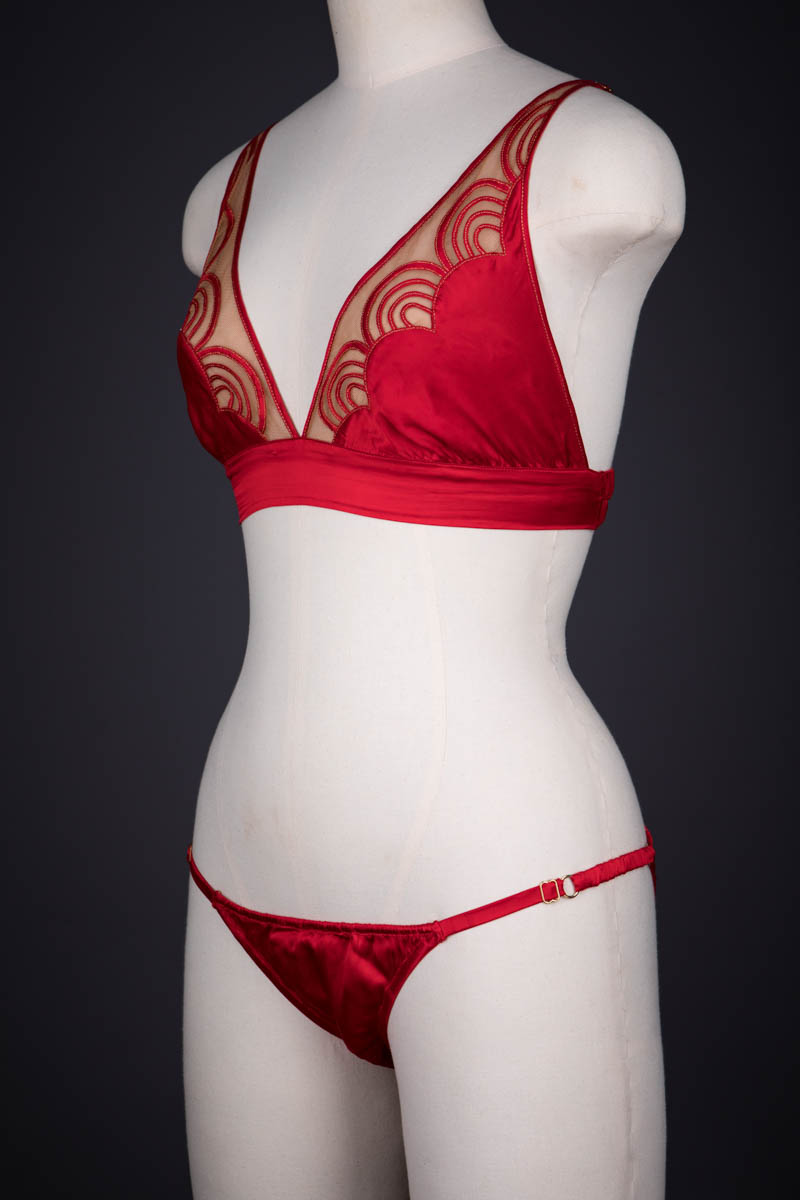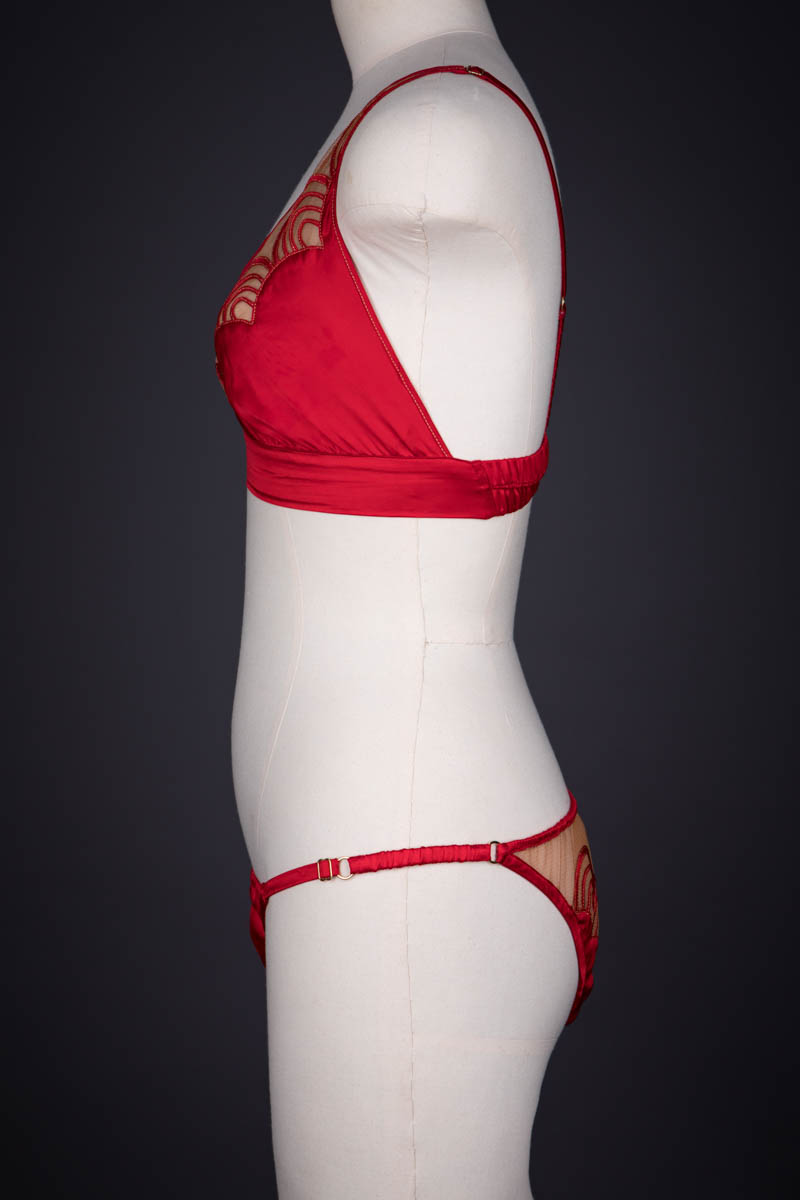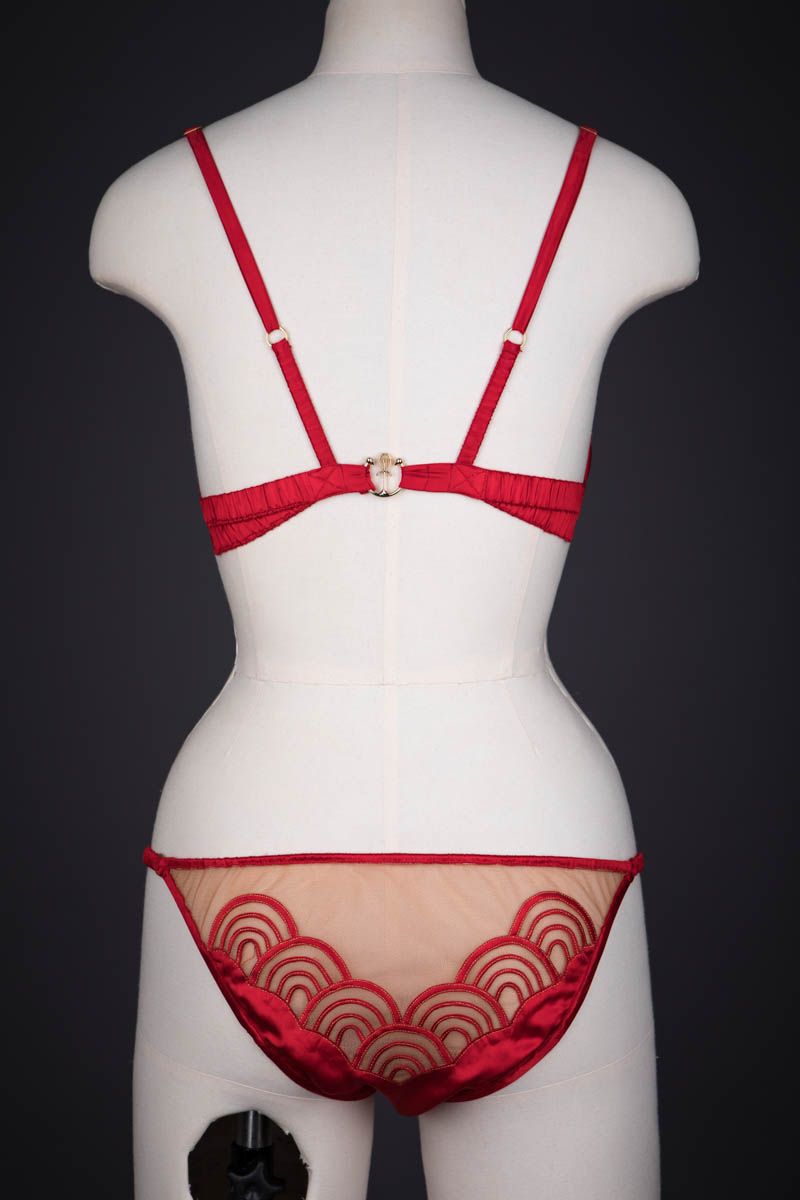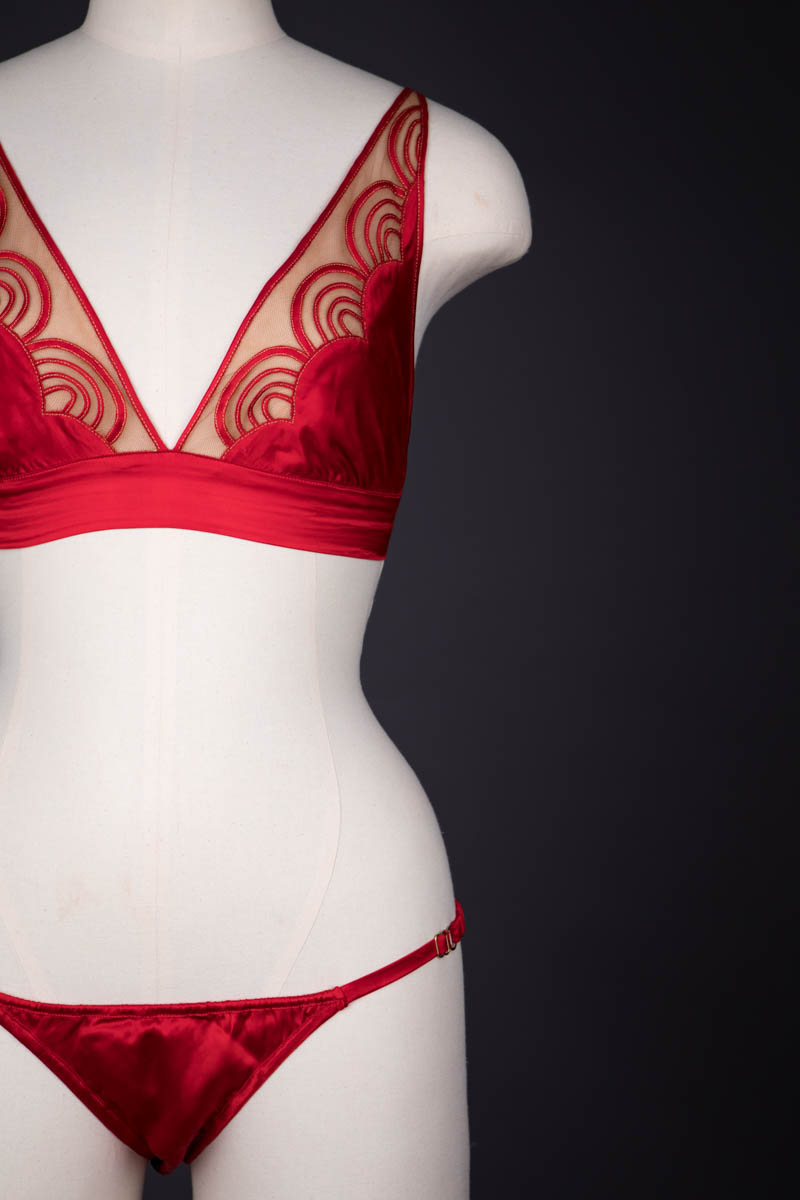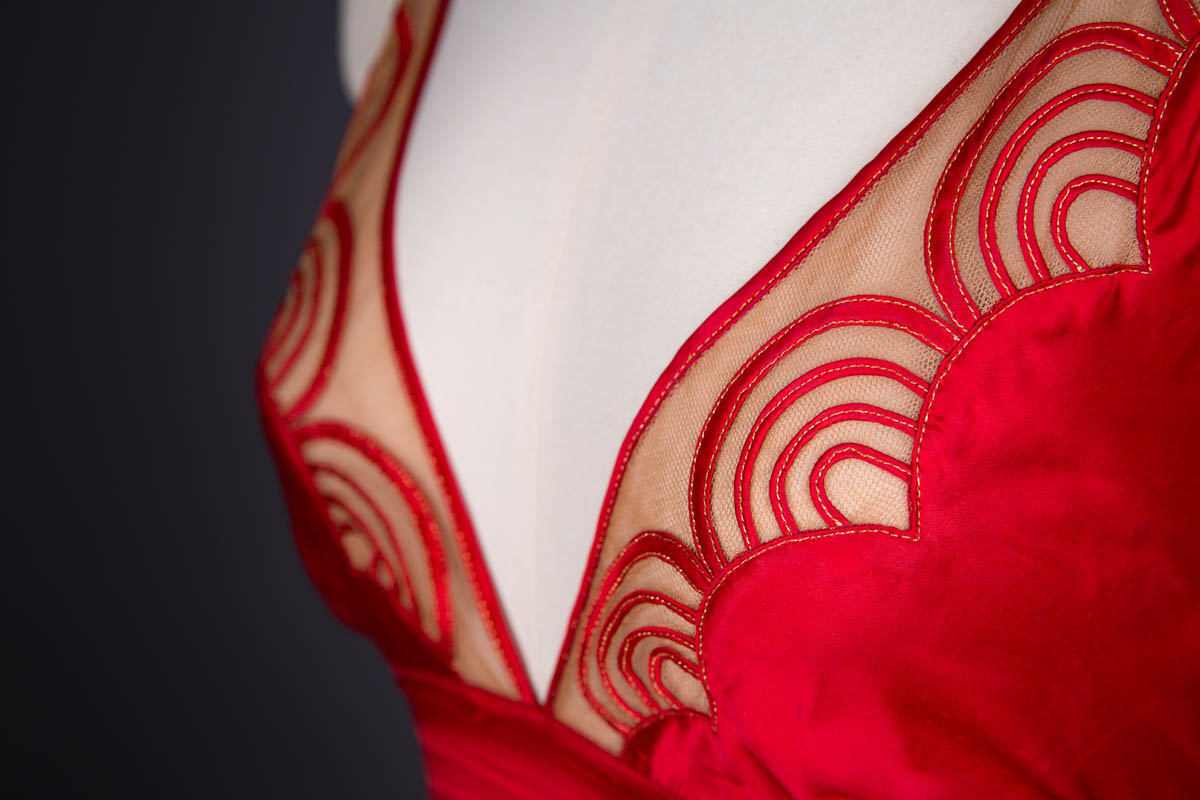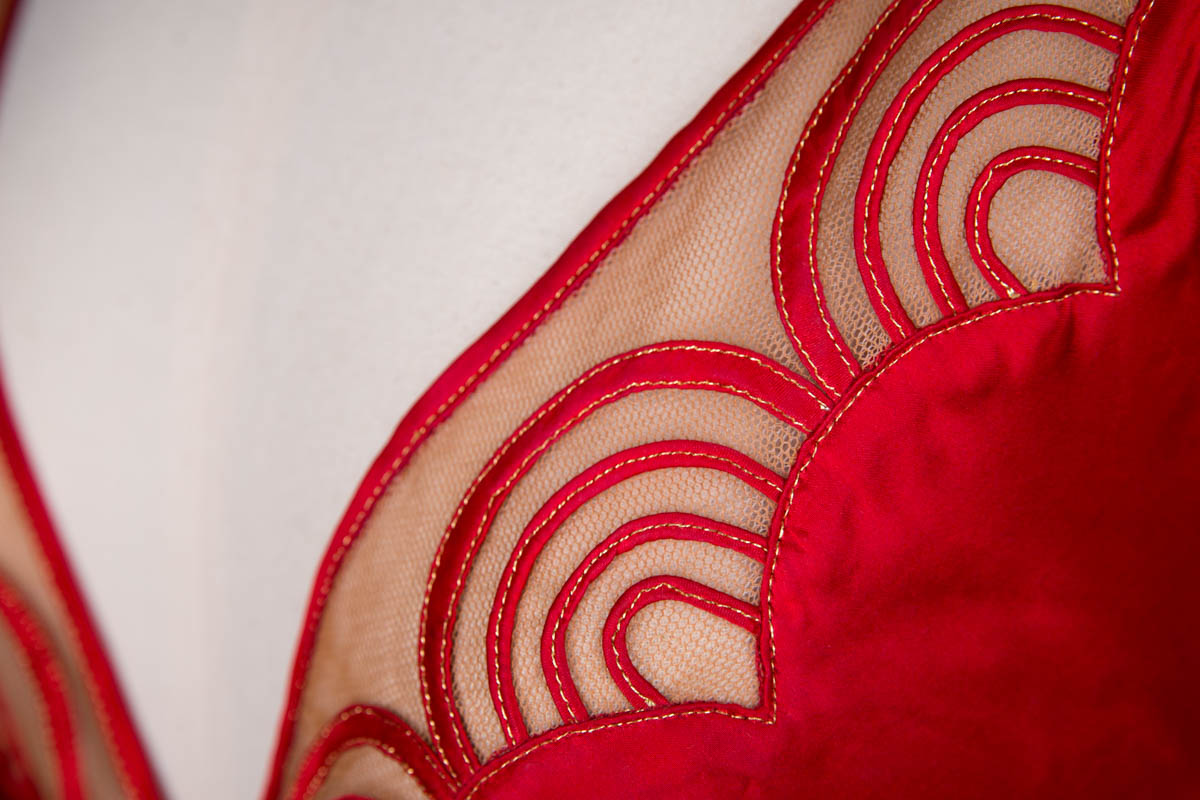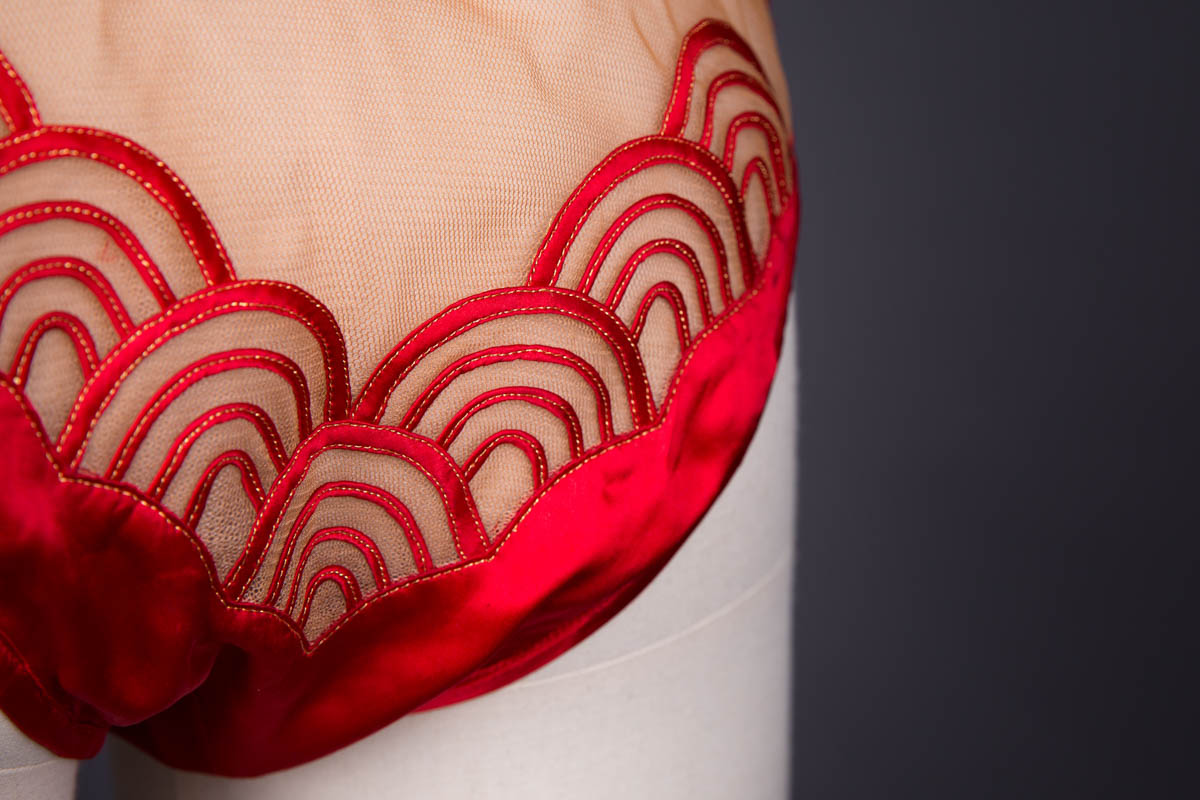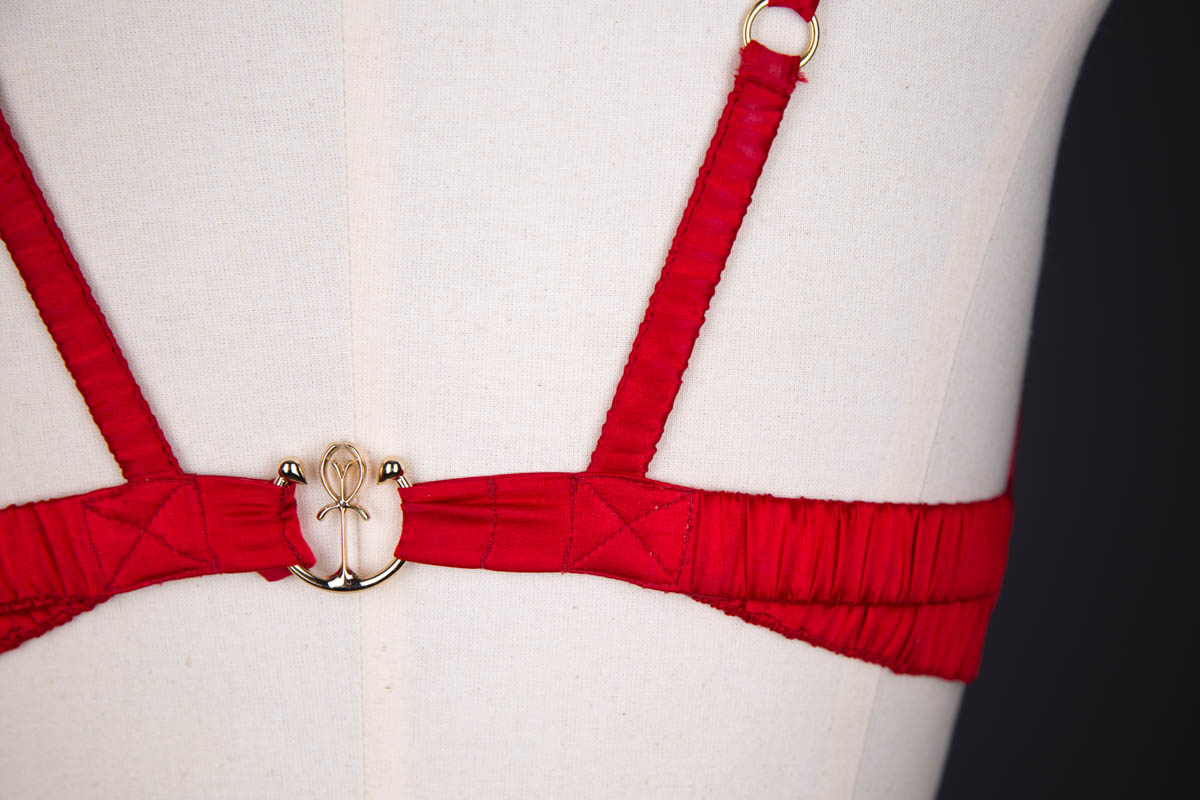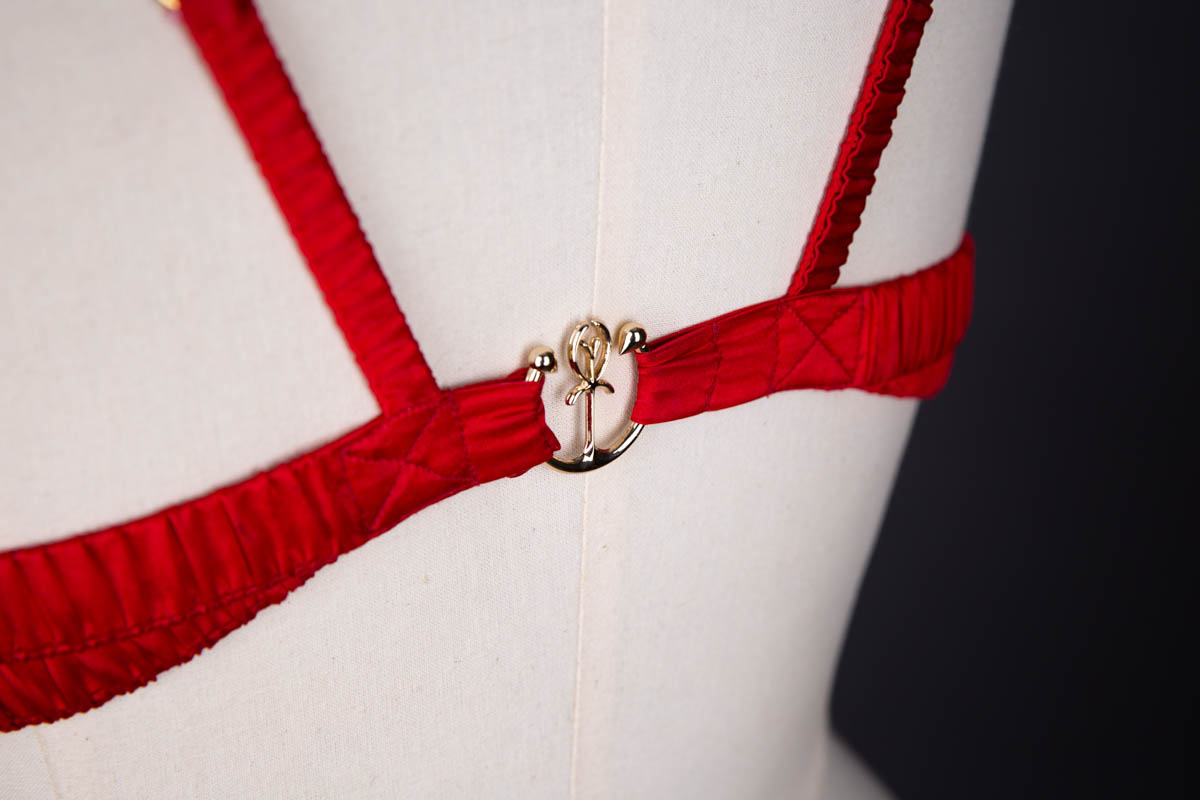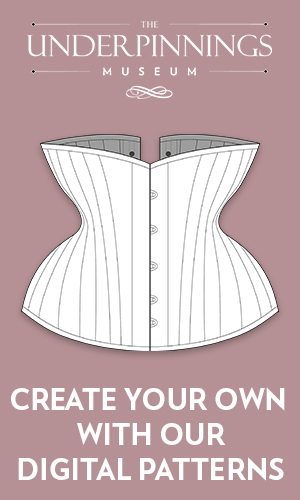Date: 2017
Origin: China
Fabric: Silk satin
Brand: Pillowbook
The ‘Sirens’ collection showcases fine couture sewing techniques, with intricate ‘waves’ of silk rouleau appliqué applied to a base of fine tulle and silk satin. The range was never officially released by the Pillowbook brand, with only a handful of sample designs created due to its perceived commercial unviability. The sewing techniques required to create these designs require phenomenal skill, time and patience. These sample pieces were stitched by couturier Hu Cui Nian.
Showcased here are a bralet and brief set with a coordinating dudou, in a vibrant red silk and a beige tulle. The dudou is a traditional Chinese lingerie style, a type of chemise with an exposed back. The silk appliqué work is stitched with a contrasting metallic gold thread, and the shoulder and hip straps are all adjustable with gold metal hardware. The bralet fastens at the rear with an intricate metal clasp in the shape of the brand’s logo.
Pillowbook was founded in 2013 by designer Irene Lu, wanting to promote traditional Chinese lingerie and championing couture hand crafting. The brand name is taken from the illustrated erotic guides that were traditionally gifted to Chinese newlyweds, giving the brand’s roots of a design aesthetic that aims to ‘inspire [their] lovers to seduce, pleasure and empower’.
With thanks to Irene Lu:
The dudou is a garment with a rich history. Prior to Mao’s rise to power, it was traditional for girls to be taught to sew from an early age, with no access to education in areas such as politics, science or mathematics. Typically women were confined to the home for the care of family. Consequently, women would hone their skills in the arts, refining areas such as painting, singing and sewing. These skillsets became sources of pride, and women were valued by their art.
On her wedding day, a bride would take her best piece of embroidery, typically square in shape, and place it on her dowry box as it was carried in her wedding parade. This was to show her skills (and by association, value) to the entire community. After the wedding ceremony, she would take the square piece of embroidered fabric, cut off a corner and attach chains to create a dudou.
For women from wealthy families, the fabric was usually silk, and for the less fortunate, cotton. The cut corner of the fabric became the neckline fo the dudou, and the chain would to around the neckline and connect to the back. Wealthy women would use gold chain, where as poorer would use a strip of cotton.
Kindly loaned to The Underpinnings Museum by Pillowbook
